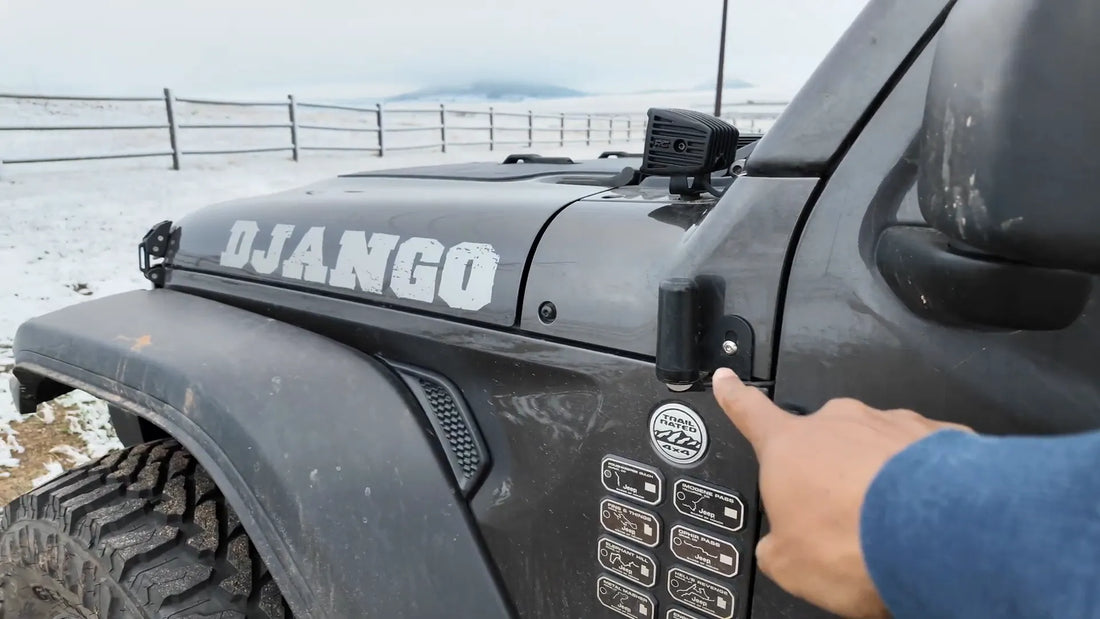
The Best Way to Communicate When You’re Off the Grid - TD-H3 GMRS Radio
Share
The Best Way to Communicate When You’re Off the Grid - TD-H3 GMRS Radio
When you’re venturing into the wilderness—whether hiking, camping, or off-roading—communication becomes a vital part of staying safe and coordinated. In areas with limited or no cell phone coverage, having a reliable way to talk with your group can mean the difference between a smooth adventure and a risky situation. Enter the TD-H3 GMRS Radio, a compact, affordable, and surprisingly feature-packed handheld device designed to keep you connected even when you’re off the grid.
In this comprehensive guide, inspired by the detailed exploration from More Dirt More Distance, we’ll dive deep into why the TD-H3 GMRS Radio is an excellent choice for outdoor enthusiasts. We’ll cover everything from its ease of use and standout features to real-world range tests and how to get your GMRS license. Whether you’re new to radios or looking for a practical, budget-friendly option, this article will provide all the insights you need.
Why Communication Off the Grid Matters
Communication is essential when you’re out in remote areas. It helps keep your group together, ensures everyone is heading in the right direction, and most importantly, maintains safety. On many hikes, especially those lasting several hours, it’s common to see groups become separated. Some members might hike faster, others might decide to turn back early, and sometimes someone might struggle physically or mentally.
Without a reliable communication device, staying connected in these situations is challenging. This is especially true if you venture out solo, where having a way to reach someone in case of emergency could be a lifesaver.
Comparing Communication Devices
There are several options for off-grid communication, including satellite communicators, satellite phones, and radios. Each has its pros and cons:
- Satellite Communicators: Devices like satellite messengers can send texts anywhere on the planet. However, they require a clear view of the sky to connect with satellites, which can be difficult in mountainous terrain.
- Satellite Phones: These also depend on satellite signals and tend to be more expensive and bulky.
- Smartphone Satellite Texting: Some smartphones can send satellite texts, but again, require clear satellite connections and are less practical for group communication.
- Radios: Radios offer an immediate, direct, and reliable way to communicate with people nearby without the need for satellites or cellular towers.
Among radios, you have options like CB radios, FRS (Family Radio Service), ham radios, and GMRS (General Mobile Radio Service). For ease of use, power, and popularity, GMRS radios stand out.
What is a GMRS Radio and Why Choose It?
GMRS stands for General Mobile Radio Service. It’s a licensed radio service that allows users to communicate over powerful radio signals without needing to be a radio expert or pass a test. This makes it accessible for outdoor enthusiasts who want a reliable communication tool without the complexity of ham radio licensing.
Here’s why GMRS radios make sense:
- Ease of Use: No exam or deep technical knowledge required.
- Powerful Signal: GMRS radios typically offer stronger transmissions than FRS radios, allowing for longer communication ranges.
- Popularity: Many overlanding groups and outdoor adventurers use GMRS, increasing the chance that others in your group will have compatible radios.
- Licensing: You do need a license to operate GMRS radios, but it’s straightforward and affordable ($35 for 10 years), covering your household and multiple radios.
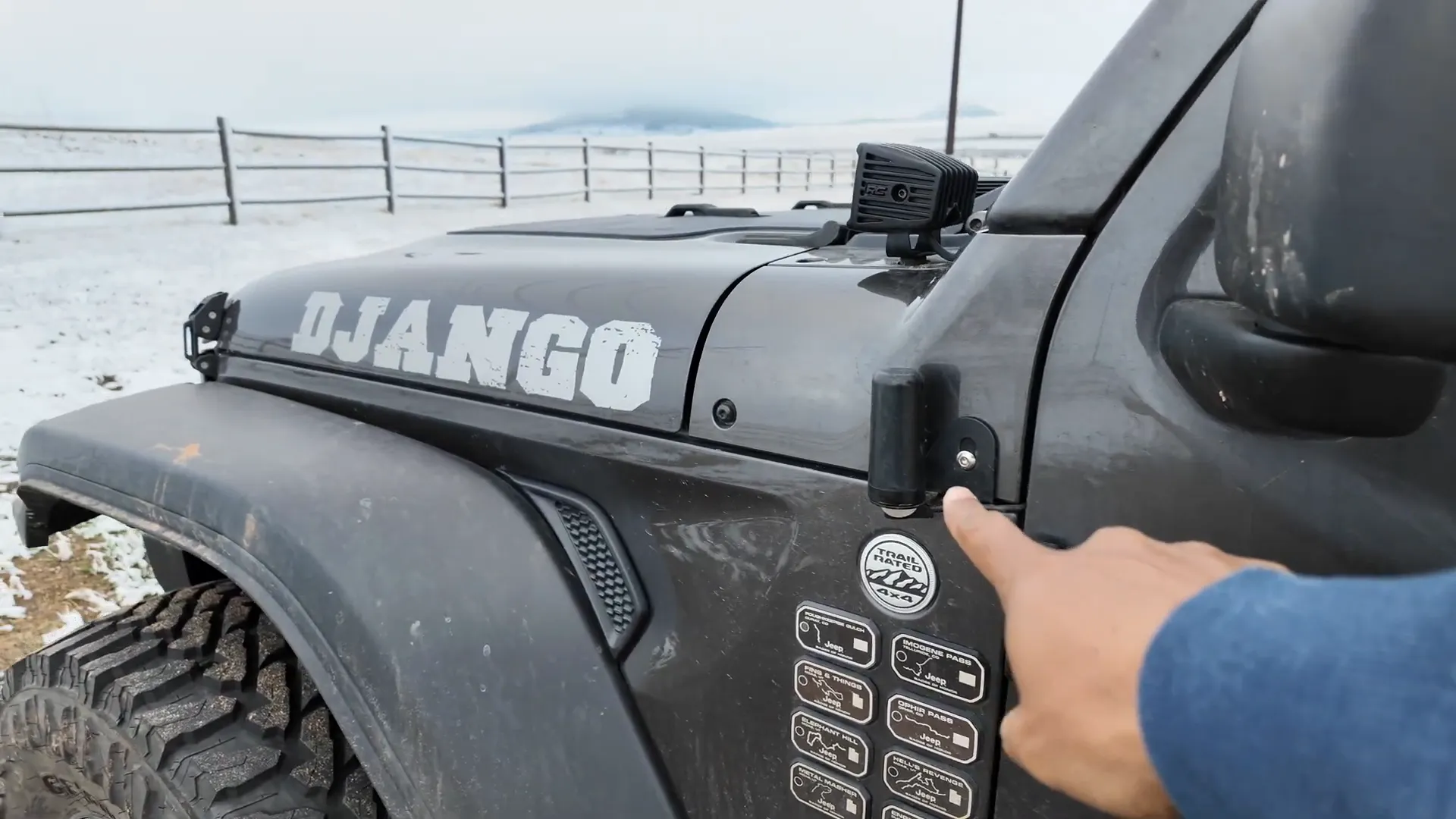
Introducing the TD-H3 GMRS Radio
The TD-H3 GMRS Radio is a compact handheld device priced under forty dollars, yet it packs features that appeal to both beginners and radio enthusiasts alike. It was sent to me by TID Radio to test, and after using it, I found it to be an impressive balance of affordability, functionality, and ease of use.
Here are some key features that make the TD-H3 stand out:
- Color Screen: A large, easy-to-see color display makes navigation and settings adjustment straightforward.
- Bright LED Light: The radio includes a powerful LED flashlight on top, useful for emergencies or nighttime use.
- Dual USB-C Ports: One port charges the battery, while the other connects to a computer for programming and customizing your radio.
- Removable Antenna and Accessories: The antenna can be detached for portability, and it comes with a removable belt clip and wrist strap.
- Bluetooth Connectivity: You can link the radio to an app on your smartphone for easy programming and customization.
- Multiple Channels: The TD-H3 supports the 30 dedicated GMRS channels, making it easy to communicate without needing to know specific frequencies.
- FM/AM Radio and NOAA Weather Alerts: You can listen to local FM/AM stations and tune into NOAA weather broadcasts for real-time weather updates.
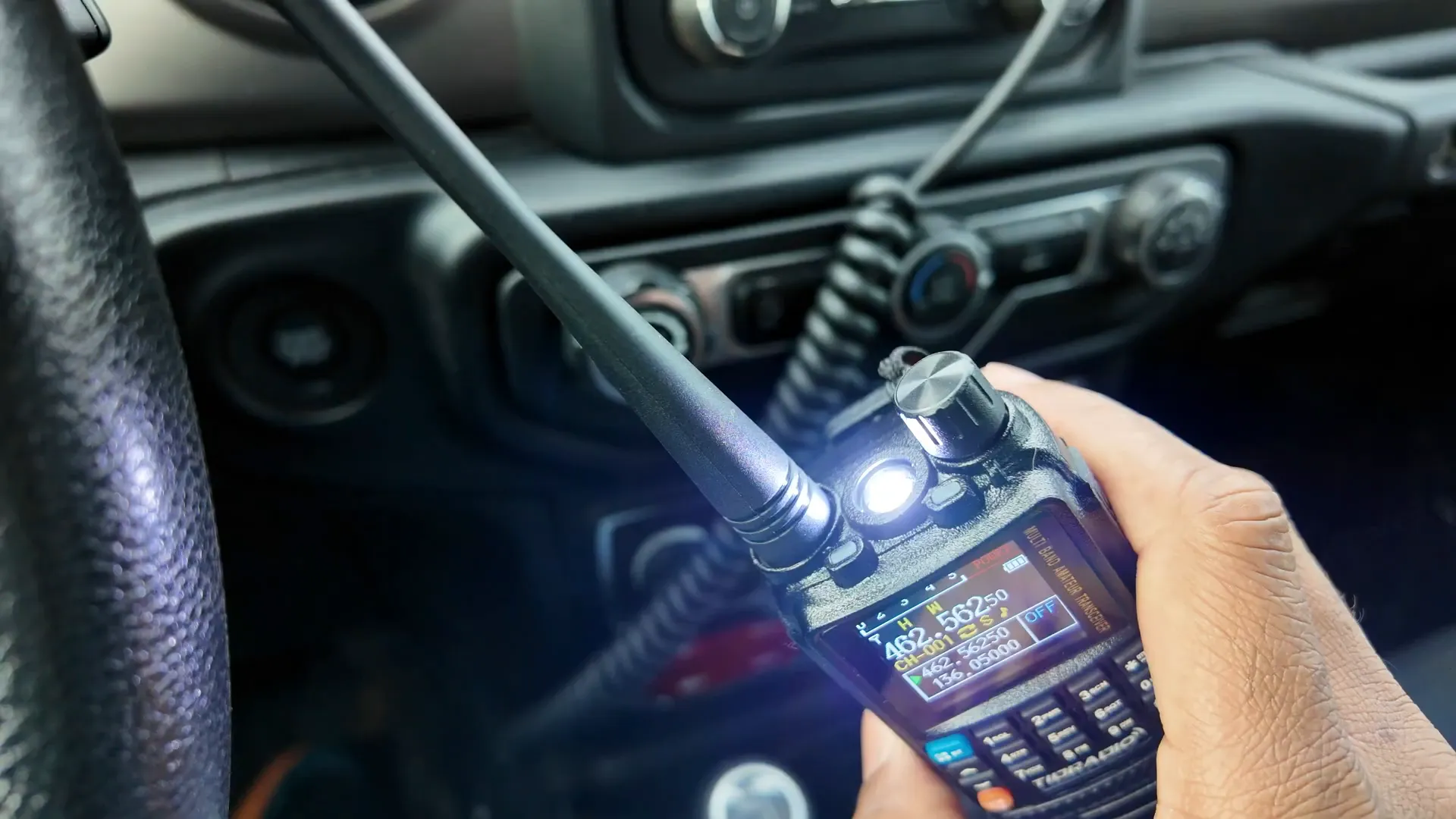
Using the TD-H3: Simple and Straightforward
One of the best things about GMRS radios, including the TD-H3, is that you don’t have to memorize or communicate complex frequencies. Instead, there are 30 preset channels. You simply tell your group to switch to a specific channel number, like “channel 1,” and you’re ready to chat—just like the walkie-talkies from childhood.
Push the button, speak, and listen. The radio handles the rest.
Understanding Range and Performance
The power output of the TD-H3 is 5 watts. The range you get from a 5-watt radio depends heavily on the environment:
- Ideal Conditions: If you have an elevated position with a clear line of sight (no buildings, trees, or mountains blocking the way), you might achieve up to 5-6 miles.
- Typical Real-World Conditions: More realistically, expect a range of a few miles, especially in hilly or forested terrain.
To test this, I took the TD-H3 on a trail with rolling hills and elevation changes, conducting radio tests every half mile up to two miles. Here’s what I found:
- 0.5 Mile Test: Clear, crisp communication with no issues.
- 1 Mile Test: Still strong, no noticeable drop in audio quality.
- 1.5 Mile Test: Communication remained clear, with no significant interference.
- 2 Mile Test: Audio quality was good, though some interference started creeping in. Still, I could hear everything clearly.

It’s important to note that the range can be significantly extended with higher watt radios. For example, the 15-watt radio I installed in my Jeep Gladiator can reach 6-8 miles under real-world conditions. GMRS radios can go up to 50 watts, theoretically providing up to 30 miles or more, depending on terrain and antenna setup.
Repeaters: Extending Your Reach
One fascinating aspect of GMRS radios is the use of repeaters. Repeaters are antennas placed at high elevations—on mountains, towers, or tall buildings—that can amplify and retransmit your radio signal over much longer distances.
Here’s how they work:
- You transmit your signal to the repeater antenna instead of directly to another radio.
- The repeater amplifies your signal and broadcasts it over a wide area.
- Other radios tuned to that repeater frequency can receive your transmission even if they are far away or separated by obstacles like mountains.
This system allows GMRS users to communicate across potentially hundreds of miles, which is a game-changer for remote travel in mountainous or rugged regions.
Repeaters can be operated by governments, private companies, or radio enthusiasts. Before using a repeater, it’s important to:
- Find the repeater’s location and operating details (many websites list repeaters by area).
- Request permission to use the repeater if required.
The TD-H3 radio’s companion app even includes a list of repeaters in your area, making it easy to find and access them.
Additional Features of the TD-H3 GMRS Radio
Besides basic communication, the TD-H3 offers some handy extras:
FM and AM Radio
You can tune into local FM and AM stations to listen to music, news, or talk shows. This is great for entertainment or staying informed when you’re off the grid.
NOAA Weather Alerts
One of the most valuable features is the ability to receive NOAA weather alerts. This can keep you updated on severe weather conditions, which is crucial when you’re outdoors.
To access NOAA alerts, you need to know the specific frequency for your area, which can be found online. The radio has a channel mode and a frequency mode; to listen to weather broadcasts, switch to frequency mode and dial in the appropriate frequency.
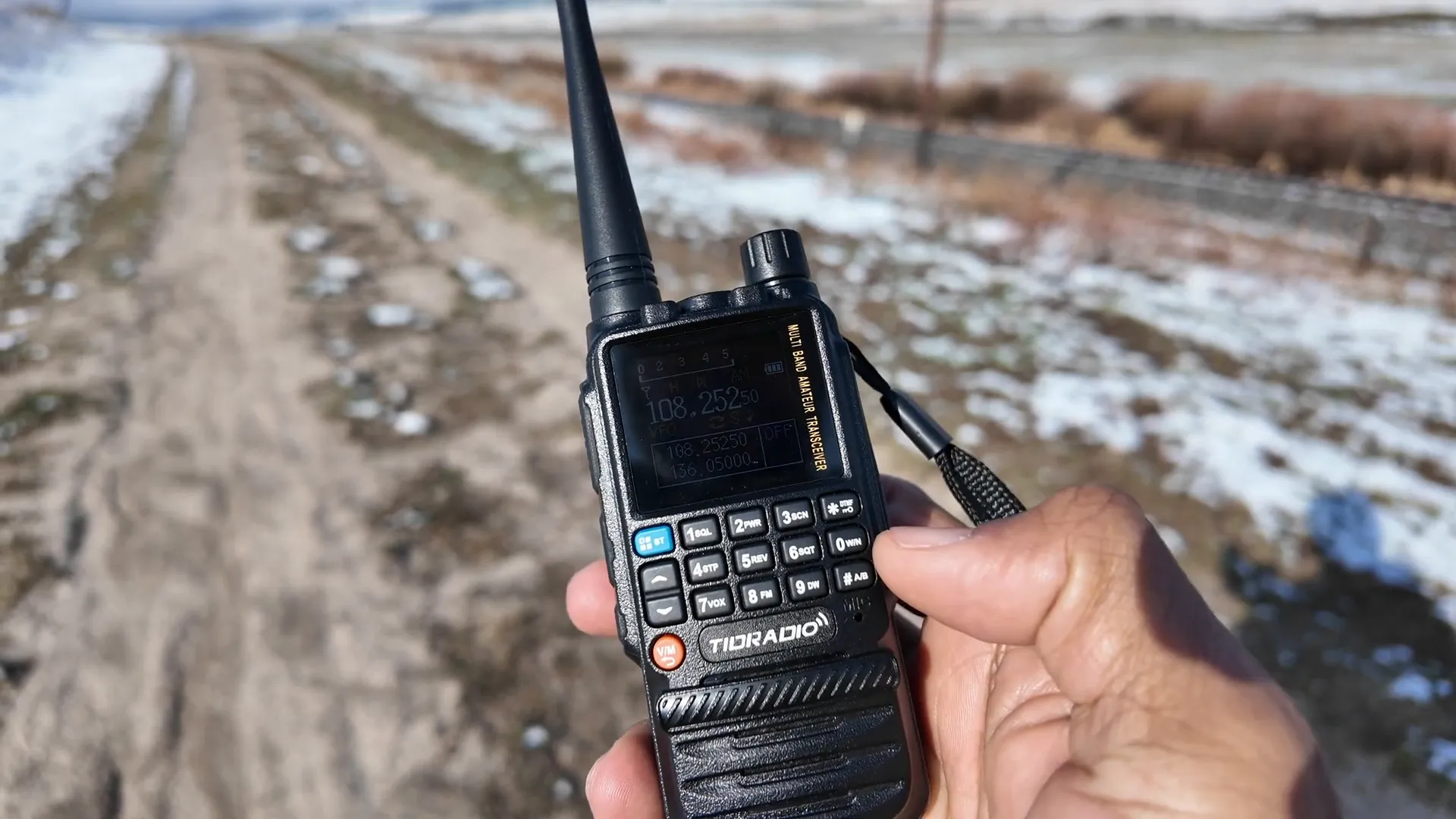
If you’re unsure of the frequency, you can scan channels to find the weather broadcast.
Privacy Features: CTCSS and DCS
GMRS channels are open, meaning anyone on the same channel can hear your communications. To help manage this, the TD-H3 includes privacy features called CTCSS (Continuous Tone Coded Squelch System) and DCS (Digital Coded Squelch).
These systems add a sub-tone or digital code to your transmissions, allowing you to filter out other users on the same channel who aren’t using the same code. This creates a “private” channel within the public one, reducing unwanted chatter.
However, it’s important to remember that this is not true encryption. Anyone with a radio tuned to the channel without the code can still hear your transmissions, so avoid sharing sensitive information.
Getting Your GMRS License: Simple Steps
Operating a GMRS radio requires a license from the FCC, but don’t let this intimidate you. The process is straightforward and affordable:
- Get Your FCC Registration Number (FRN): Visit the FCC’s Universal Licensing System (ULS) website and register. You’ll create an account with your name and contact details, and receive your FRN.
- Apply for Your GMRS License: Using your FRN, log into the FCC ULS and apply for a new license. Choose GMRS from the list of services.
- Fill Out Your Information: Provide your personal details and answer a few standard questions (e.g., whether you’ve been convicted of a felony).
- Review and Submit: Confirm your information, certify its accuracy, and submit your application.
The license fee is $35 and covers you and your household for 10 years, including multiple radios. Once approved, you’ll receive a call sign that you’re supposed to use when transmitting.
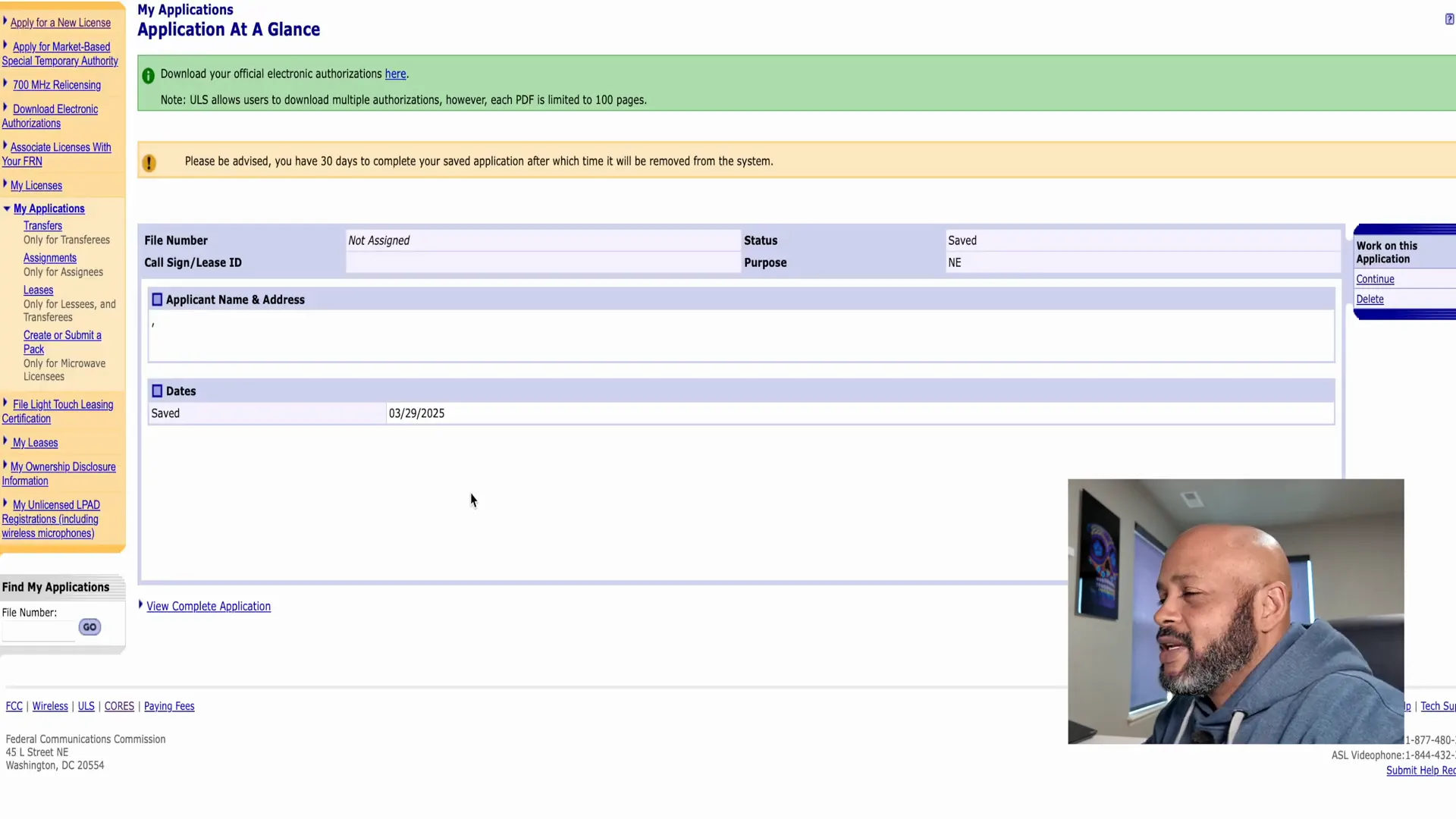
Pros and Cons of the TD-H3 GMRS Radio
Pros
- Affordable price under $40 with an impressive feature set.
- Easy to use even for beginners.
- Compact and portable with removable antenna and belt clip.
- Color screen and bright LED flashlight.
- Bluetooth app for easy programming and customization.
- Access to GMRS’s 30 dedicated channels and privacy codes (CTCSS/DCS).
- Ability to listen to FM/AM radio and NOAA weather alerts.
- Good audio quality and reliable communication up to a couple of miles in typical terrain.
Cons
- There is a learning curve to understand radio terminology and features like squelch, CTCSS, and DCS.
- Requires a GMRS license from the FCC, which is easy to get but is an extra step.
- Range is limited to a few miles without repeaters or higher watt radios.
- Privacy codes do not encrypt communication; transmissions are still open air.
Conclusion: Is the TD-H3 GMRS Radio Right for You?
For anyone who spends time outdoors away from reliable cell service, the TD-H3 GMRS Radio is a fantastic communication tool. Its affordability, ease of use, and rich feature set make it an excellent choice for hikers, campers, off-roaders, and solo adventurers alike.
While there’s a bit of a learning curve and a licensing requirement, these are minor hurdles compared to the safety and convenience benefits you gain. The ability to communicate clearly with your group, access weather alerts, and extend your range through repeaters makes this radio a smart investment for your outdoor gear.
Whether you’re installing a more powerful GMRS radio in your vehicle or carrying the TD-H3 handheld on your hikes, having dependable communication is peace of mind you can’t put a price on.
Frequently Asked Questions (FAQ)
Do I need a license to use the TD-H3 GMRS Radio?
Yes. The FCC requires a GMRS license to operate GMRS radios. The process is simple, costs $35, and the license lasts 10 years. It covers you and your household.
What is the range of the TD-H3 GMRS Radio?
The TD-H3 is a 5-watt radio. Under ideal conditions with clear line of sight, you can get up to 5-6 miles. In typical outdoor terrain with hills and trees, expect a few miles of reliable communication.
Can I use the TD-H3 with repeaters?
Yes. Repeaters are powerful antennas that amplify your signal, allowing communication over much greater distances. The TD-H3 app includes information on repeaters in your area.
What are CTCSS and DCS on the TD-H3?
They are privacy features that add sub-tones or digital codes to your transmissions, helping reduce interference from other users on the same channel. They do not encrypt your communication.
Does the TD-H3 support weather alerts?
Yes. You can tune into NOAA weather broadcasts by switching to frequency mode and dialing in the correct frequency for your area. This is useful for staying informed about weather when off-grid.
Can the TD-H3 be programmed using a computer or phone?
Absolutely. It has a USB-C port for computer programming, and it can connect via Bluetooth to an app for easy customization and channel programming.
For anyone looking to stay connected safely and reliably while exploring the great outdoors, the TD-H3 GMRS Radio is a compelling choice that combines affordability, functionality, and ease of use in one compact package.
